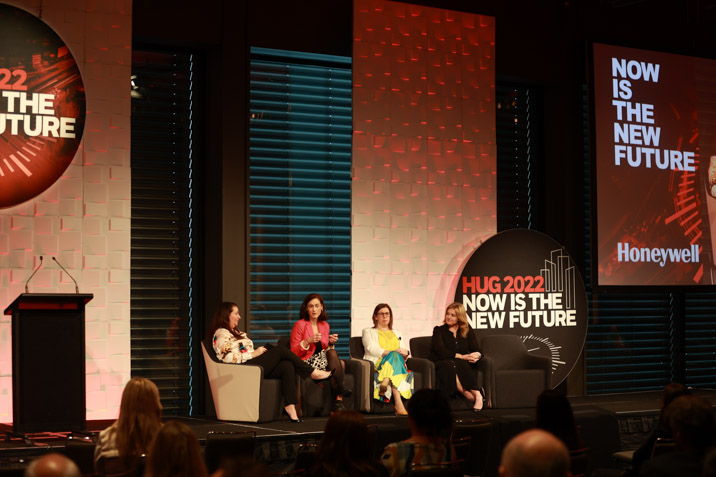
Sydney conference hones in on wellbeing and sustainability
The 2022 edition of Honeywell’s Users Group conference in Sydney brought a number of the company’s personnel and consumers together to discuss a range of ideas and demonstrate an array of new technologies.The 2022 edition of Honeywell’s Users Group conference in Sydney brought a number of the company’s personnel and consumers together to discuss a range of ideas and demonstrate an array of new technologies.
Given that 90 percent of our lives are spent inside buildings, Honeywell and the vast majority of the built environment are moving towards improving wellbeing and connectivity. Pollutant concentration is five times higher in some buildings compared to outdoors, and less than one percent of buildings carry WELL certification.
Honeywell’s Chief Technology Officer, Udaya Shirvastava, says it’s imperative that health and wellbeing is focused on when devising new buildings.
“We have to focus on health and wellbeing, even if it will drive up energy requirements. You need to mine the right level of data to set the right baselines in order to meet health, wellbeing and comfort goals. We have to get to science-based targets and work towards them,” she says.

Honeywell has created a number of new products and programs that measure the efficiency and sustainability of buildings and test the technologies on their buildings before taking them to market. The company is additionally intent on utilising new technologies to mitigate the labour shortage currently faced across the globe.
Real Estate of the Future’s Nikki Greenberg headlined the conference’s offerings on Tuesday with a presentation titled The 2030 Opportunity. Greenberg discussed the need to futureproof buildings by considering the technological needs of their future occupants.
The future occupants Greenberg spoke of are Gen Z, who expect a digital workforce. With an eight second attention span and an average of ten hours spent on electronic devices per day, it's important that architects cater for what Greenberg calls the iGeneration.

According to an MiT study, buildings that are sustainable and efficient get an 8.2 percent rent premium and a 23.7 percent transaction premium. ESG’s are now dictating the way buildings are financed and mandated, and buildings with high air quality result in higher productivity and wellbeing.
“We have seen a disruption in Covid that has changed the mentality of people coming into buildings,” says Greenberg.
“We’ve also seen an evolution in technologies, but we’re living in a time in which there’s been a disruption and a shift. Technology is a solution to a lot of our issues currently in our sectors.
“We cannot predict the future, but we can create it.”
- Popular Articles



